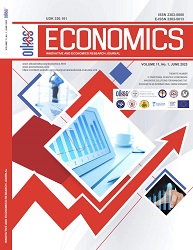Turnover in EU Monetary Policy in a Crisis
Turnover in EU Monetary Policy in a Crisis
Author(s): Larysa Lebedeva, Diana ShkuropadskaSubject(s): Supranational / Global Economy, Economic policy, Economic development, Financial Markets, Fiscal Politics / Budgeting
Published by: Oikos institut-Istraživački centar Bijeljina
Keywords: monetary policy; monetary tightening; inflation rates; liquidity; economic growth; ECB (European Central Bank); monetary tools;
Summary/Abstract: The role of monetary policy has become increasingly important in recent years, as a range of economic challenges have emerged, affecting both developing and economically advanced countries. The aim of this article is to examine the shift in the monetary policy of the EU, which has been expressed through changes in the tools used by the European Central Bank (ECB), and to consider the causes and economic implications of this shift. The descriptive analytical method was used to achieve this goal. The study identified that the aim of the ECB's interest rate increases was primarily to slow down core inflation rates. The ECB has raised the refinancing rate from 0.5% to 2.5% in 2022 and halted asset purchase programs, such as the Pandemic Emergency Purchase Programme, which had previously stimulated liquidity growth. Despite these changes, forward guidance has been maintained as a useful tool for providing clarity and certainty to financial markets and the public about the future path of monetary policy. It is concluded in the study that the impact of the shift towards contractionary monetary policy is likely to be felt across a range of economic sectors, with higher borrowing costs potentially leading to reduced investment and lower levels of economic growth.
Journal: ECONOMICS-INNOVATIVE AND ECONOMICS RESEARCH JOURNAL
- Issue Year: 11/2023
- Issue No: 1
- Page Range: 177-194
- Page Count: 18
- Language: English

